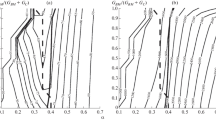Abstract
In this parametric study, the effects of coal and oxidiser type, air-to-fuel ratio, steam-to-fuel ratio, reactor temperature, and pressure on H2 and CO amounts at the gasifier output, H2/CO, and higher heating value of the syngas produced have been calculated using a coal gasification model. Model simulations have been performed to identify the optimum values which are assumed to be 100 % for both cold gas efficiency and carbon conversion efficiency in the gasification process. From this study, it may be observed that the moisture content of the coal type is of crucial importance for the air gasification process; the O2 content of similar coals (taking into consideration the moisture and H2 content) is of significant importance for the air gasification process. When compared with air gasification, air-steam gasification becomes a more effective coal gasification method. The optimum working condition for air-steam gasification is to carry out the process at one atmosphere. High gasifier temperatures are not needed for the air-steam gasification of coal.
Similar content being viewed by others
References
Casleton, K. H., Breault, R. W., & Richards, G. A. (2008). System issues and tradeoffs associated with syngas production and combustion. Combustion Science and Technology, 180, 1013–1052. DOI: 10.1080/00102200801962872.
Huang, J., Fang, Y., Chen, H., & Wang, Y. (2003). Coal gasification characteristics in a PFB. Energy Fuels, 17, 1474–1479. DOI: 10.1021/ef030052k.
Kaushal, P., Pröll, T., & Hofbauer, H. (2007). Model development and validation: co-combustion of residual char, gases and volatile fuels in the fast fluidized combustion chamber of a dual fluidized bed biomass gasifier. Fuel, 86, 2687–2695. DOI: 10.1016/j.fuel.2007.03.032.
Li, X., Grace, J. R., Watkinson, A. P., Lim, C. J., & Ergüdenler, A. (2001). Equilibrium modeling of gasification: a free energy minimization approach and its application to a circulating fluidized bed coal gasifier. Fuel, 80, 195–207. DOI: 10.1016/s0016-2361(00)00074-0.
Lin, S. Y., Harada, M., Suzuki, Y., & Hatano, H. (2002). Hydrogen production from coal by separating carbon dioxide during gasification. Fuel, 81, 2079–2085. DOI: 10.1016/s0016-2361(02)00187-4.
Shi, S. P., Zitney, S. E., Shahnam, M., Syamlal, M., & Rogers, W. A. (2006). Modeling coal gasification with CFD and discrete phase method. Journal of the Energy Institute, 79, 217–221. DOI: 10.1179/174602206x148865.
Tsui, H., Yavuzkurt, S., & Scaroni, A. (2002). Thermodynamic analysis of the gasification of coal water slurry fuels for a circulating fluidized bed gasifier. Journal of Power and Energy, 216, 343–353. DOI: 10.1243/095765002320877838.
Author information
Authors and Affiliations
Corresponding author
Rights and permissions
About this article
Cite this article
Gungor, A., Ozbayoglu, M., Kasnakoglu, C. et al. A parametric study on coal gasification for the production of syngas. Chem. Pap. 66, 677–683 (2012). https://doi.org/10.2478/s11696-012-0164-0
Received:
Revised:
Accepted:
Published:
Issue Date:
DOI: https://doi.org/10.2478/s11696-012-0164-0




